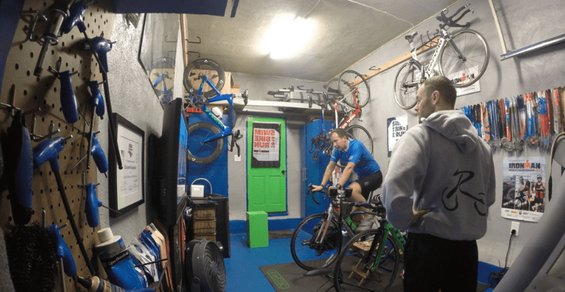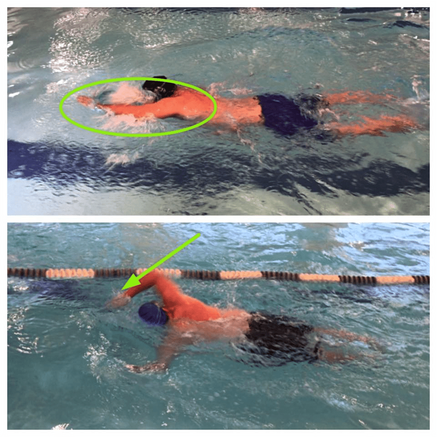|
Technique in Triathlon is Key! (continued) By now you know why technique in triathlon is important. You also know what you must do once technique flaws are identified. In the final part of the series we will address 3 more technique mistakes triathletes make and how to fix them. If you missed part 1, you can check it out here. And if you missed part 2, you can check it out here. SWIM: Arm Belly FlopThe way your arm enters the water helps determine how affective your catch and subsequent pull will be. Additionally, excessive splashing caused by your arm entering the water will create more drag, which will slow you down even more. The better your catch the more water you’ll be able to “grab” and the further and faster you’ll move through the water as you complete your stroke. The goal is to make your hand enter the water closer to your head (as opposed to far out in front of you) and then continue to drive and extend it forward on a slight angle (down) under water. Think of your hand as a high diver, diving into the water. Your goal is to make as little splash as possible. Try not to disappoint the judges on this one :) BIKE: Low Bike Cadence Cadence as it relates to cycling is a measure of how fast you are pedaling (i.e. RPM). Depending on your gearing this can be very easy or very difficult. The optimal cadence for cycling on flat terrain is about 90; give or take ~5 reps. This is considered an ideal balance between muscular and cardiovascular recruitment. When climbing, your cadence will likely be in the 70’s and 80’s. This is ok, but try to avoid a cadence in the 60’s or lower if possible. If you consistently find yourself with an average cadence in the low 80’s or in the 70’s at the end of your ride, you should consider riding in an easier gearing combination. This will help bring up your average cadence. It is important to note cadence times force equals power. Cadence x Force = Power As such, you will still go about the same speed, but your legs will be less taxed. This is especially helpful when you need to get off your bike and run. In addition to putting yourself in an easier gear, you may also have to condition yourself to hold a higher cadence. You can do this by integrating cadence pyramids during off-season workouts and as part of your warm ups year round. Similar to cycling cadence, as you run, you should strive for a cadence of about 90 (or 180 for both feet). You may have noticed many elite marathoners appear to float along as they run, barely touching the ground and at a cadence in the high 90’s. RUN: Vertical Oscillation While watching people run it is not uncommon to see athletes with a bounce or spring in their step/stride. Vertical oscillation is the up and down movement that occurs with each stride. While everyone will “bounce” slightly when they run, the goal is to reduce this as much as possible. When it comes to endurance running, too much bounce, wastes energy and decreases the distance forward with each stride. You can help reduce vertical oscillation by trying not to lift your knee so much when running. Instead, try to drive your knee FORWARD in the direction you’re going and NOT UP & FORWARD (which will create extra oscillation & more work). For an extreme example, think about where your knee goes when you skip. Up! Admittedly, this can be a tricky concept to learn. When practicing, try to remind yourself to lean and push off with each stride. If you want to make it really simple, just tell yourself to ‘run smooth’ or pretend like you’re running with a glass of water on your head. Garmin has recently integrated advanced run metrics within their newer products. One of them measures vertical oscillation. While it is unclear on the exact number one should aim for, do your best to keep the number as low as possible. We hope you enjoyed this 3 part series. If you missed part 1 or 2, all 3 parts will be listed under the “Training” section of our blog.
To learn more about our 1 on 1 coaching sessions click here. If you would like to arrange a 1 on 1 session with one one of our coaches, please contact us. Comments are closed.
|
Categories
All
Archives
July 2024
|
RTA TriathlonRTA is a comprehensive triathlon coaching organization and fully supported USAT sanctioned triathlon club.
We are based in Ridgewood, NJ and coach triathletes of all abilities from across the country. Our mission is to make you a better triathlete. Contact us when you're ready to take your "game" to the next level. |
|
|
Quick Links |
Let's get social
RTA Triathlon
Copyright © 2022
Copyright © 2022



 RSS Feed
RSS Feed
